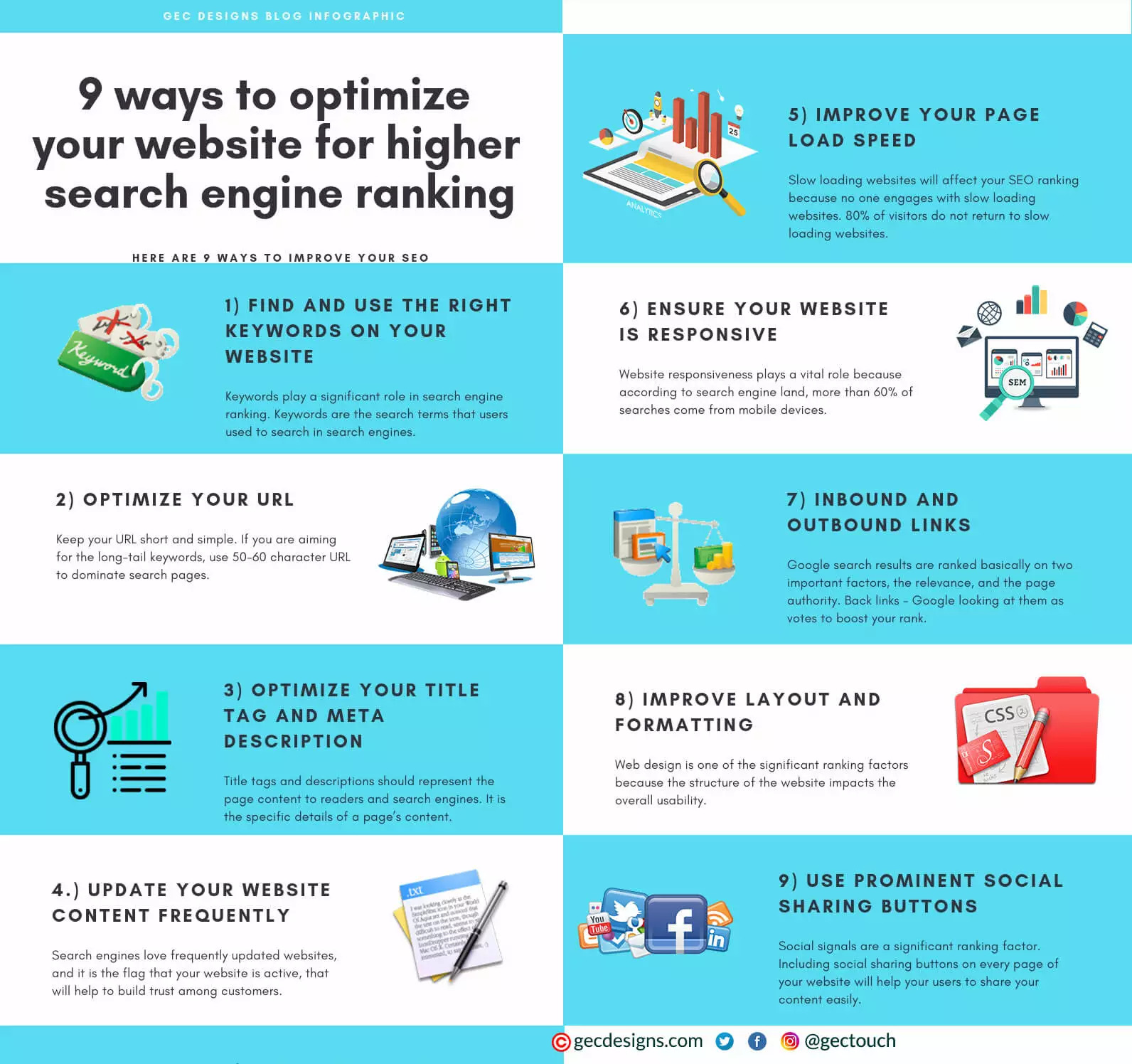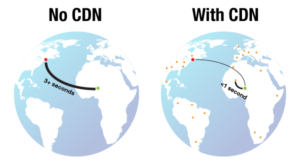CDNs and SEO: The Interrelation of Speed, Ranking, and Visibility

Introduction

In today’s digital landscape, website speed has emerged as a paramount factor influencing user experience, search engine rankings, and overall online visibility. Content Delivery Networks (CDNs) play a pivotal role in optimizing website speed and delivering content efficiently to users around the globe. This article delves into the intricate relationship between CDNs, SEO, and their combined impact on website success.

CDN Optimization for Improved Website Speed
CDNs are distributed networks of servers strategically located in various geographical regions. When a user accesses a website, the CDN automatically directs them to the nearest server, reducing latency and improving page load times. For SEO purposes, website speed is a crucial ranking factor, as users tend to abandon slow-loading pages, resulting in lower dwell time and higher bounce rates.
Content Delivery and Latency Reduction
CDNs optimize content delivery by caching frequently accessed files, such as images, CSS, and JavaScript, on their edge servers. This eliminates the need for the browser to retrieve these files directly from the origin server, significantly reducing latency and improving website performance. Faster content delivery enhances the user experience, leading to reduced bounce rates and increased page views.
Enhanced Security and Uptime
CDNs offer additional security benefits by protecting websites from malicious attacks, such as DDoS and brute-force attempts. They employ various security measures, including encryption, firewalls, and intrusion detection systems, ensuring that websites remain online and accessible even during peak traffic or attacks. By providing high uptime and availability, CDNs contribute to a positive user experience and prevent potential reputational damage associated with website downtime.
Improved Visibility in Search Results
Website visibility in search engine result pages (SERPs) is influenced by a multitude of factors, including page speed. Search engines, such as Google, prioritize fast-loading websites in their rankings. By utilizing CDNs to optimize speed, businesses can enhance their SERP visibility, increasing organic traffic and boosting website engagement.
Case Studies and Success Stories
Numerous case studies and real-world examples demonstrate the positive impact of CDNs on SEO performance. For instance, a study by Moz revealed that implementing a CDN reduced page load times by an average of 50%, resulting in a significant increase in organic traffic and improved search engine rankings.
Conclusion
The integration of CDNs into website architecture is an essential step for businesses striving to enhance SEO performance and overall online visibility. By optimizing website speed, reducing latency, improving content delivery, and enhancing security, CDNs empower businesses to provide a superior user experience, boost SERP rankings, and maximize their online potential. By understanding the intrinsic connection between CDNs, SEO, and website success, businesses can make informed decisions and leverage the power of CDNs to achieve their digital objectives.## Cdns And Seo: The Relationship Between Speed, Ranking, And Visibility
Executive Summary
This article examines the intricate relationship between page speed, search engine rankings, and website visibility. It explores the impact of page load time on user experience, search engine optimization (SEO), and overall website performance. By understanding this relationship, Canadian businesses can optimize their websites for better search visibility and increased traffic.
Introduction
In today’s fast-paced digital landscape, website speed has become a crucial factor in attracting and retaining website visitors. Research shows that users expect websites to load within 2-3 seconds and are likely to abandon pages that take longer. This has a significant impact on website analytics, including bounce rates, time spent on page, and conversion rates.
FAQs
-
Q: How does page speed affect SEO?
-
A: Search engines like Google consider page speed as a ranking factor. Slow-loading pages are less likely to appear on the first page of search results, as they provide a poor user experience.
-
Q: What are the key indicators of website speed?
-
A: Page load time, Time to First Byte (TTFB), and Cumulative Layout Shift (CLS) are three important metrics that measure website speed.
-
Q: How can I improve my website’s speed?
-
A: Optimizing image sizes, reducing the number of plugins, and enabling caching are some effective ways to improve website speed.
Speed and Ranking
Page speed directly affects website rankings. Search engines use page load time as a ranking factor, with faster websites receiving higher priority in search results. This is because Google and other search engines want to provide users with the best possible experience, and slow-loading pages can frustrate users and lead to higher bounce rates.
Speed and User Experience
Website speed has a major impact on user experience. Visitors expect websites to load quickly, and slow load times can lead to impatience, frustration, and increased bounce rates. This is especially important for mobile users, who often have slower internet connections.
Speed and Conversion Rates
Website speed can also affect conversion rates. Studies have shown that visitors are more likely to make a purchase or take a desired action on websites that load quickly. This is because faster websites provide a better user experience and make it easier for visitors to find the information or products they are seeking.
Speed and Crawlability
Website speed can also affect crawlability. Search engine crawlers can take longer to crawl and index slow-loading websites, which can lead to poor search visibility. By optimizing website speed, businesses can ensure that search engine crawlers can efficiently access and index their website.
Top 5 Subtopics
1. Page Load Time
- Measures the time it takes for a web page to fully load.
- Google’s recommended page load time: Less than 3 seconds.
- Impact on SEO: Slower load times correlate with lower rankings.
- Impact on user experience: Visitors abandon slow-loading pages.
- Factors affecting page load time: Image size, server response time, number of plugins.
2. Time to First Byte (TTFB)
- Measures the time it takes for a browser to receive the first byte of data from a web server.
- Ideal TTFB: Less than 200 milliseconds.
- Impact on SEO: Longer TTFB suggests poor server performance, which can negatively impact rankings.
- Impact on user experience: Delays in receiving the first byte of data can frustrate users.
- Factors affecting TTFB: Server location, network latency, DNS lookup.
3. Cumulative Layout Shift (CLS)
- Measures the amount of unexpected layout shift that occurs during page loading.
- Ideal CLS: Less than 0.1.
- Impact on SEO: High CLS can negatively impact rankings.
- Impact on user experience: Unexpected layout shift can distract users and make it difficult to interact with the page.
- Factors affecting CLS: Dynamic content, poorly sized images, asynchronous loading.
4. Caching
- Stores frequently accessed data in temporary storage to reduce load time.
- Types of caching: Browser caching, server caching, CDN caching.
- Impact on SEO: Proper caching can improve page load time and enhance search rankings.
- Impact on user experience: Faster page load times provide a better user experience.
- Considerations: Cache expiry, cache invalidation, cache headers.
5. Image Optimization
- Optimizing images reduces their file size without sacrificing quality.
- Optimizing techniques: Compressing images, using appropriate image formats, resizing images.
- Impact on SEO: Smaller image files reduce page load time, which can positively impact rankings.
- Impact on user experience: Optimized images load faster, improving the user experience.
- Consideration: Lossy vs lossless compression, image dimensions, image formats.
Conclusion
Website speed is a critical factor that impacts search engine rankings, user experience, and overall website performance. By optimizing page load time and addressing key speed-related factors, Canadian businesses can improve their website visibility, attract more visitors, and enhance their online presence. By implementing recommended optimization techniques and monitoring website performance, businesses can ensure their websites are fast, user-friendly, and effectively positioned in search results.
Keyword Tags
- Website speed
- Search engine optimization (SEO)
- Page load time
- User experience
- Conversions
- Bounce rate
- Time to First Byte (TTFB)
- Cumulative Layout Shift (CLS)
- Caching
- Image optimization
